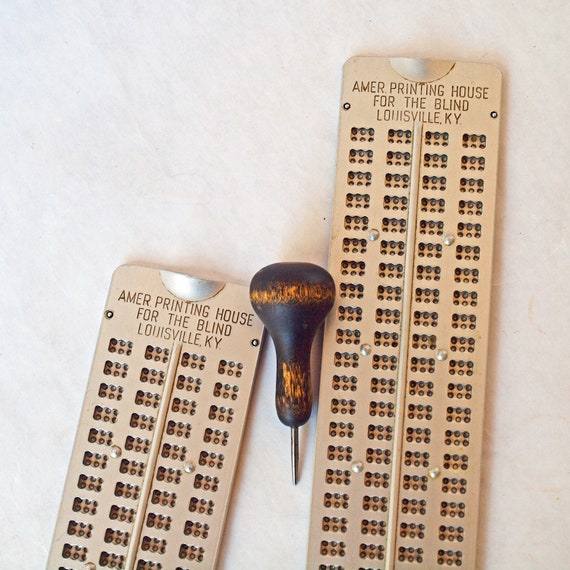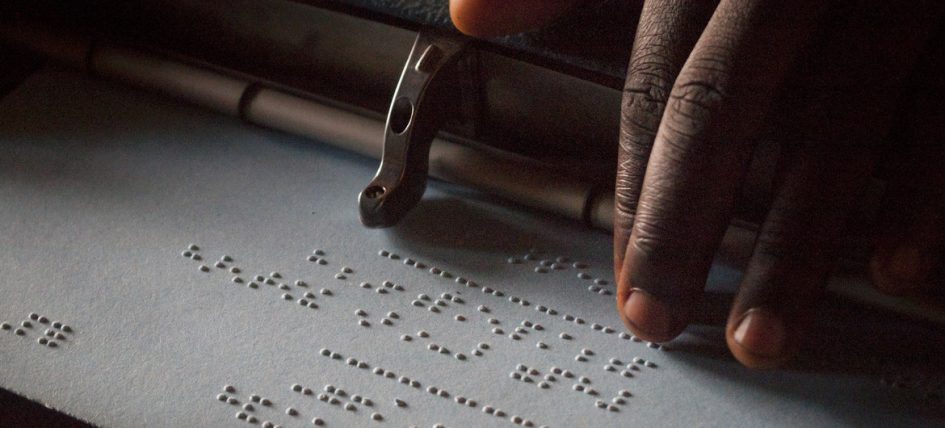The invention of Braille has created accessibility and assisted many visually impaired individuals for hundreds of years now, allowing them to read and write through the sense of touch. This system is truly revolutionary and has helped unite individuals together in assisting them to gain the ability to read.
Origins of the Braille System
The creation of Braille dates back to the early 1800s with a student by the name of Louis Braille. At the age of three, Braille became blind after an incident he had in his father’s workshop that caused his vision to disappear. At the time, there was already an existing language system instilled for the visually impaired, however, the language structure was inefficient and not ideal for reading quickly. As 1821 approached, Braille was introduced to a new form of communication created by Charles Bariber, known as night writing. This was originally designed for military use to allow soldiers to communicate with one another at night without getting caught by the opposing side. It entailed using a 6×6 grid of raised dots on a sheet of paper that formed messages when touched. Despite the military’s request, Bariber’s system ended up being rejected as it was too complicated to implement into the military setting.

Inspired by Bariber’s invention, Braille began experimenting with this technique to create his own communication system. By 1825, at the age of 15, Braille compiled a method similar to Bariber’s and created a code that was functional and effective. The new system was now simplified to a 2×3 grid instead of the original 6×6, making it fit on a fingertip and more efficient. Along with this, the newer version allowed up to 63 combinations to create symbols and letters, and it was also adaptable to languages other than French. While Braille was revolutionary and innovative, the system was not popularized until 1834 after Braille demonstrated the use of his invention at the Exposition of Industry in Paris.

Process of Braille Writing
With over 63 variations in Braille writing, a system of numerical indicators is included in the language to organize the dots and curate different combinations to create letters and symbols. The vertical row on the left indicates one, two and three and the row on the right represents four, five and six. With all of these indications, they work together to form letters of words. To create these writings in Braille, a machine known as a slate is used to create the raised texture of the paper. This device includes two metal plates that are held together just enough, so a piece of paper can be placed in between. The machine also consists of a window and six small pits to create the braille patterns. Once the paper is placed into the device, it is then pressed together, and a stylus is used to push the paper into the pits to create the raised Braille. After this procedure, the Braille is now complete.

Looking at Braille as a whole, the language has come a long way in evolving and helping the visually impaired in the modern-day and past. Braille’s innovation of this system has made it possible for individuals of all kinds to read and write. It is for this reason why this language system is so important and revolutionary.
Sources
“Braille.” Encyclopædia Britannica, Encyclopædia Britannica, Inc., https://www.britannica.com/topic/Braille-writing-system.
TodayIFoundOut.com, Emily Upton -. “How Braille Was Invented.” Gizmodo, Gizmodo, 26 Nov. 2013, https://gizmodo.com/how-braille-was-invented-1471756840.
Header Image: https://news.un.org/en/story/2021/01/1081312

Leave a Reply